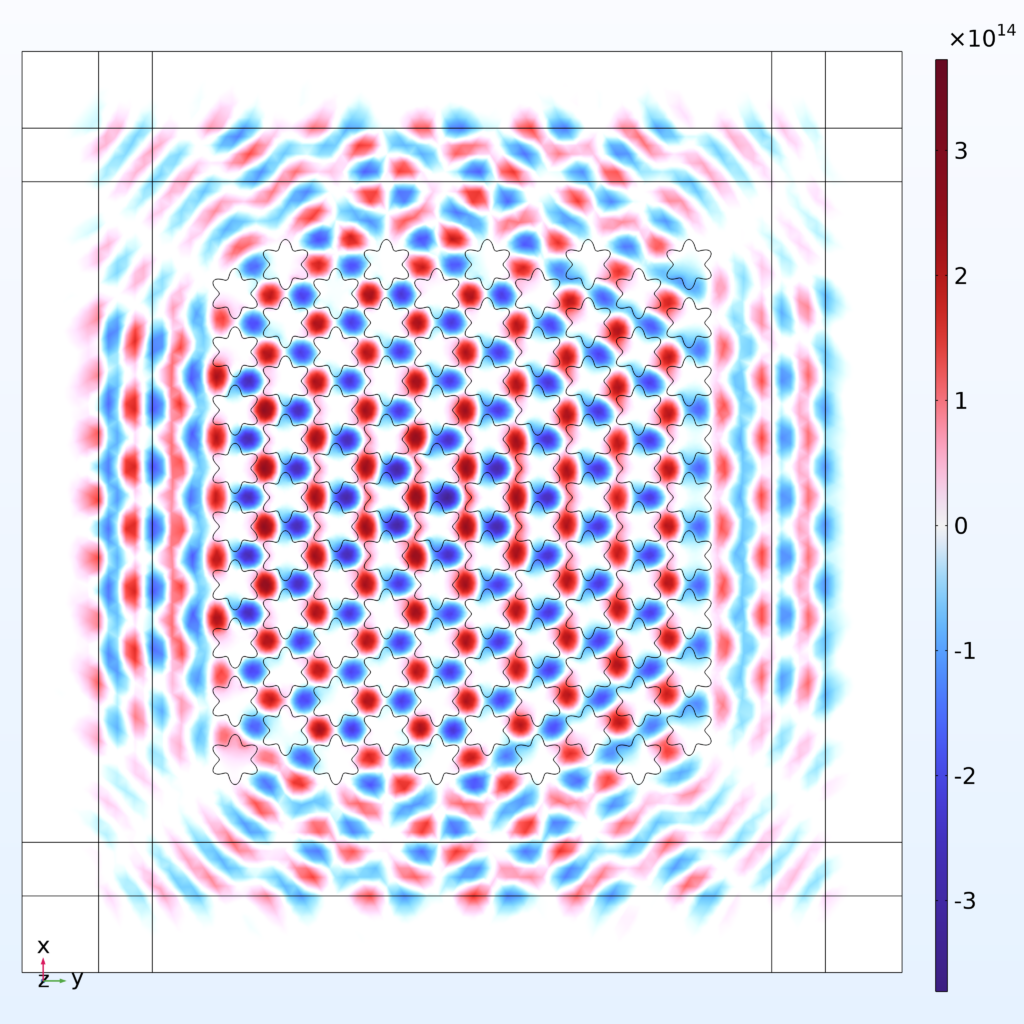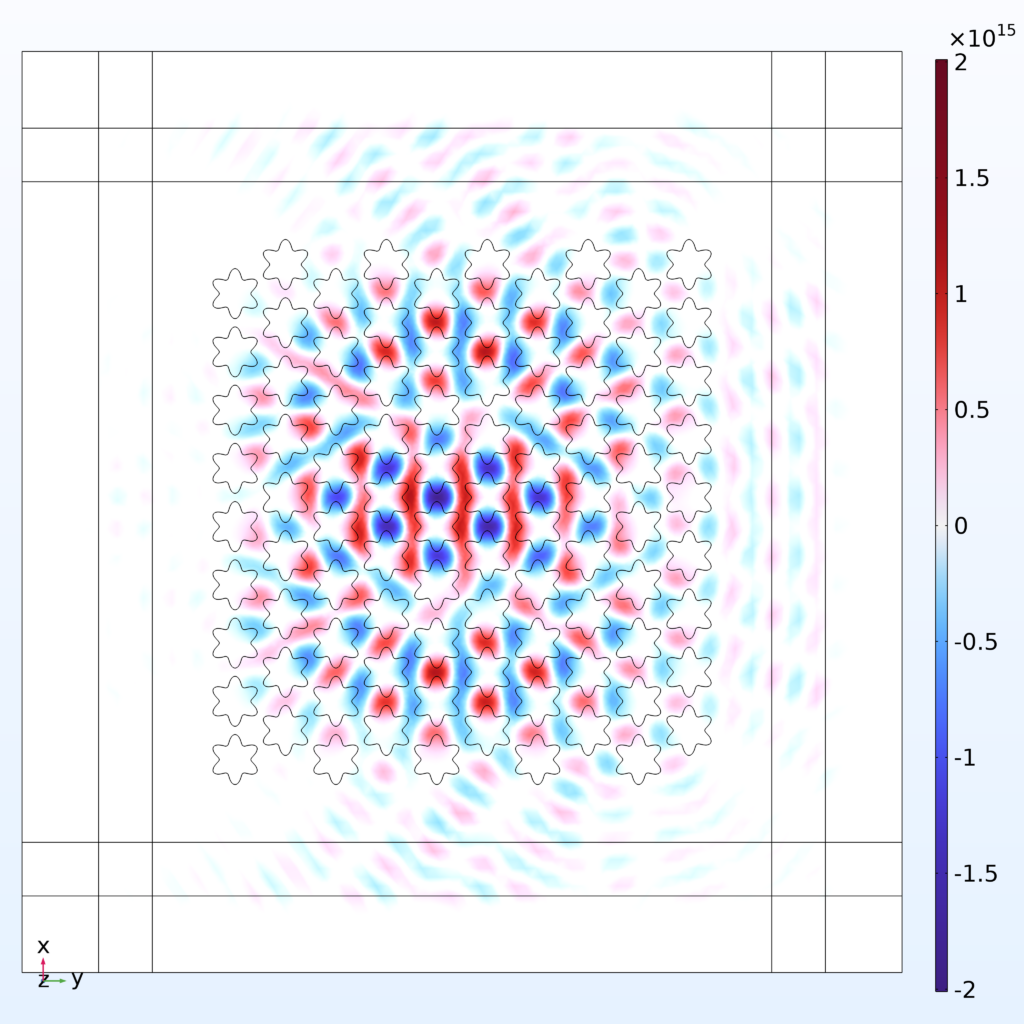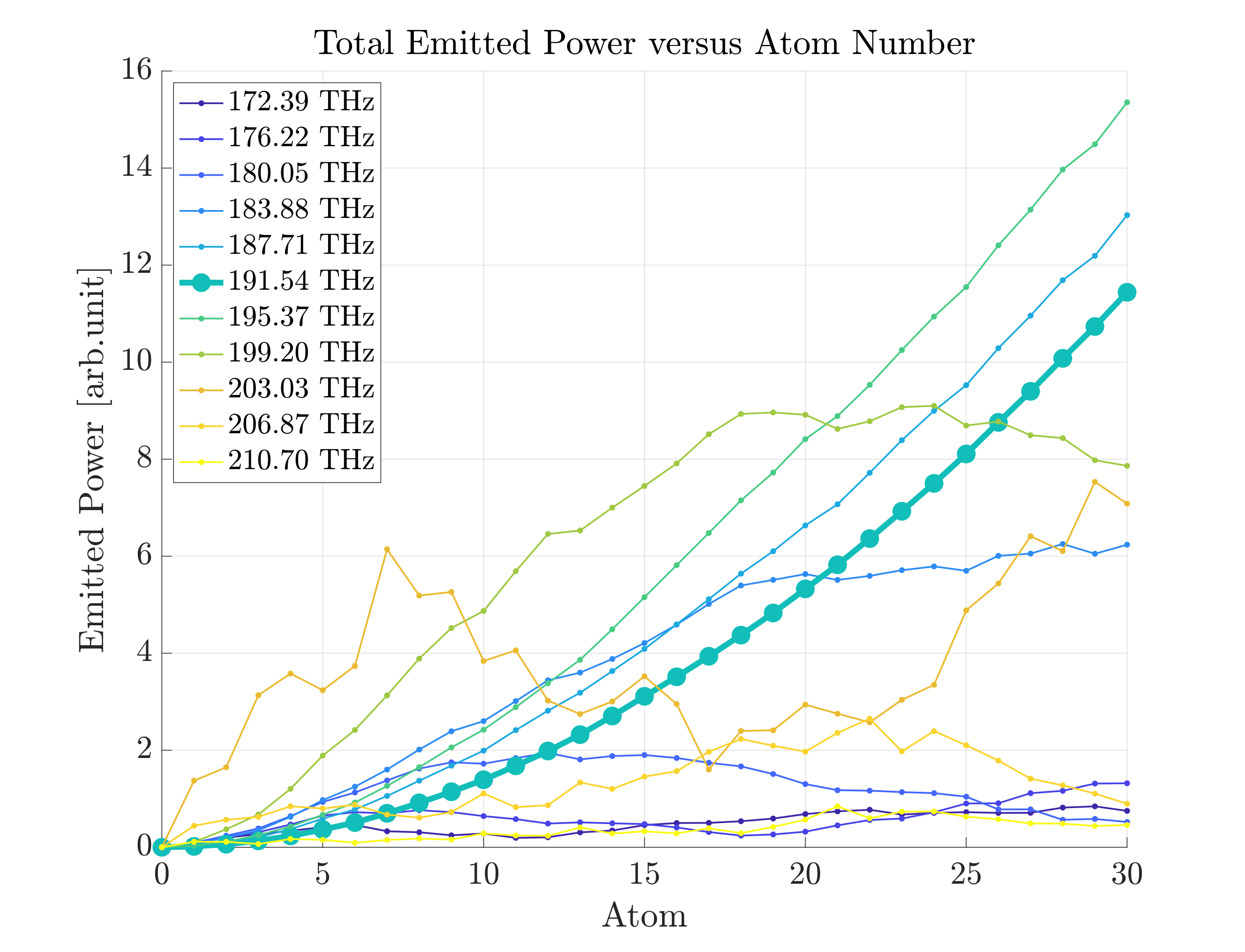Xukun Lin, Michele Cotrufo
Abstract
This thesis uses an effective zero-index photonic crystal to support superradiance of atoms within it. I show that the emitted power of the atoms depends quadratically on the number of atoms activated, which is a characteristic of superradiance.
Introduction
Superradiance refers to the phenomenon that a collection of atoms, when placed very close to each other, displays a collective decay rate that is larger than the spontaneous decay rate of a single atom.
When the atoms are separated by distances much larger than the light wavelength, the total decay rate of the collection of atoms is equal to the single-atom spontaneous decay rate. Instead, when atoms are separated by distances comparable to the wavelength of the emitted photon, all atom-atom interactions mediated by photon carries the same phase and thus interfere constructively. This gives rise to a collective mode, with a boosted decay rate which is equal to N times the decay rate of a single atom.
We use a 2D photonic crystal with the effective zero-index property. The dispersion curves of the unit cell of this structure intersect at the 𝛤 point at frequency f₀ = 191.54 THz.
Results
Figures below show the real part of the electric fields at the central slice of the photonic crystal. It is evident that the atoms experience little phase difference near f₀ (the left). The right figure corresponds to a frequency larger than f₀, and the phase relations among the atoms are not obvious. The results support our observation of superradiance.


In the figure below, the power depends quadratically on the number of atoms inside the structure at f₀. This directly confirms that superradiance occurs at f₀.

Conclusion
In this thesis, we observe that near the 𝛤 point of the finite 2D photonic crystal, the emitted power has a N² dependence on the number of atoms within the photonic crystal. Further simulations about the one activated atom case show the no-phase-difference property of the structure, which indicates the zero-index property. The results therefore indicate that superradiance occurs near f₀.
Reference
1 M. Minkov, I.A.D. Williamson, M. Xiao, and S. Fan, “Zero-Index Bound States in the Continuum,” Phys. Rev. Lett. 121(26), 263901 (2018).
